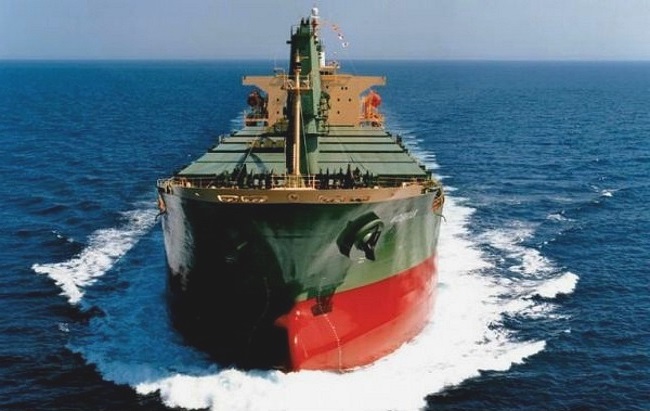The Supramax trans-Atlantic grain assessment Recalada-to-Bejaia experienced several losses during the third and fourth quarters of 2022 amid several draughts in Argentina that caused a cutback in grain cargoes, while spot rates have hit multiyear lows in January.
Draughts in Argentina brought less business for Supramax vessels end-2022
Argentina, one of the world’s largest grain exporters and third-largest exporter of corn, suffered several draughts in the last two seasons amid a significant water deficit, which caused smaller crop yields.
Grain volumes dry bulk vessels carried from Argentina-San Lorenzo port to Algeria-Bejaia port in 2022 totaled 1.12 million mt.
The Supramax segment carried 75% of that volume, or 887,000 mt, with the rest 25% transported by Handysize and Handymax dry bulk vessels, according to S&P Global Commodities at Sea data.
Looking at the volumes the Supramax segment carried, a reduction in fresh cargoes saw grains volumes at San Lorenzo port begin to fall from May, with volumes in June seeing the heaviest decline, down 70.2% month on month, according to Commodities at Sea data.
In terms of the types of grain cargoes, Supramax dry bulk vessels carried 774,700 mt of corn stems, or 87% of the volume, and 112,300 mt of soya meal, or 13%.
Looking at Argentina’s corn output, forecasts for the marketing year February 2022-January 2023 point to a drop of 14.4% year on year to 44.5 million mt, while a fall in production could tighten global supplies, according to data from the Buenos Aires Grains Exchange released Jan. 20.
Spot rates hit multiyear lows, grain prices rise
The freeze in grains cargoes and a lack of fresh inquires in line with ample supply tonnage in the region meant the Supramax market was unable to reverse the bearishness.
As cargoes and ships appeared to be imbalanced, grain spot freight rates collapsed, and trans-Atlantic time charter rates hit multiyear lows. The 40,000 mt trans-Atlantic grains assessment, open Recalada, San Lorenzo to Bejaia, on Jan. 23 hit their lowest rates since Nov. 2, 2020, when Platts, part of S&P Global Commodity Insights, started assessing the route.
Trans-Atlantic time-charter rates on Jan. 23 traded at $7,139/d, down by 35%, from the previous low on Nov. 11, 2020, at $11,114/d and down 86% from the last peak on April 1, 2022, at $52,871/d. That was highest rate since Russia’s invasion of Ukraine on Feb. 24, according to S&P Global Commodity Insights data.
Spot freight rates also collapsed and hit a multiyear low of $25.25/mt on Jan. 29, down more than 65% from the peak of $74/mt on March 31, 2022.
In the wake of production concerns, corn sales have remained stagnant in Argentina. The distortion between offers and domestic prices in line with weak demand for exports have pushed grains prices higher since July. Corn FOB Up River was assessed at $302.46/mt on Jan. 24, up 25% since the 2022 low of $239.86/mt seen in July.
February cargoes find a floor
The Supramax market found a floor for trans-Atlantic runs, with February loading dates seeing bullish signs while spot rates have begun to rise.
In the East Coast South America region, the trend of laden-ballast Supramax vessels has shown a spread of minus seven vessels for January, with 67 ballasts and 60 laden Supramax vessels, according to S&P Global Commodities at Sea data.
“We have found a floor for February cargoes and now we are in the four digits,” a charterer said.
Time charter rates for trans-Atlantic grain trips are in a range of $10,000-$12,000/d APS for Supramax vessels, according to market sources.
The bullish sentiment has begun to push up spot grain freight rates, with the 40,000 mt Recalada-Bejaia grain route assessed at $28.50/mt on Jan. 27, up 15% week on week.
Source: Hellenic Shipping News






